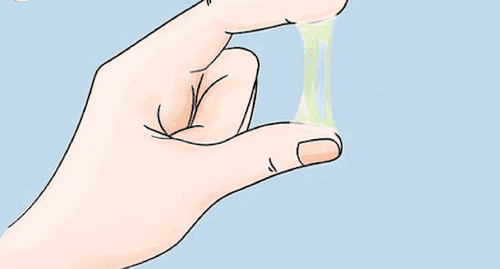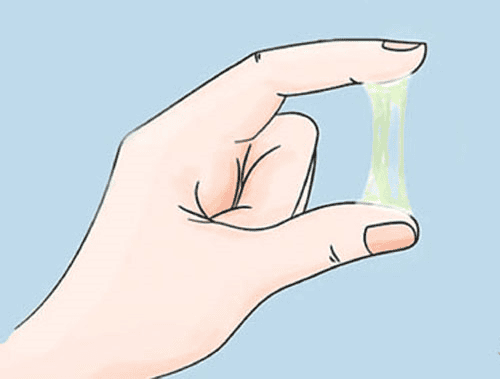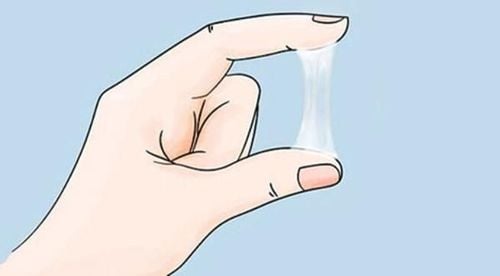This is an automatically translated article.
The article was professionally consulted with Doctor Obstetrician and Gynecologist - Department of Obstetrics and Gynecology - Vinmec Hai Phong International General Hospital.
Vaginal discharge, also known as vaginal discharge, appears in women from the time they enter puberty. In addition to acting as a lubricant and moisturizing agent for the genital environment, vaginal discharge is also a "weapon" to help limit the growth of pathogens in the private area.
1. What is bad breath?
Vaginal discharge is vaginal discharge, also known as white blood. Vaginal discharge marks the development and functioning of the female reproductive organs, when appearing from puberty and gradually decreasing at menopause. Normal discharge is white, chewy, odorless, or slightly fishy. The amount of vaginal discharge varies from person to person based on female hormone levels and decreases with age. During perimenopause and menopause, the decline in estrogen levels will cause less vaginal discharge than in the previous period. In contrast, in the time before ovulation, during pregnancy or sexual intercourse, the amount of discharge will be more.
Characteristics of vaginal discharge at each stage of a woman are as follows:
Puberty to the end of adolescence: This is the period when vaginal discharge begins to appear and has menstruation. Age 20 to menopause: From the age of 20 to 30, the amount of vaginal discharge of a woman reaches the highest level, then gradually decreases with the decline in female hormone levels. Post-menopausal age: After menopause, the regulation of estrogen is slowed down, the amount of vaginal discharge decreases, causing women to experience vaginal dryness.

2. The role of bad breath
Vaginal discharge (vaginal secretion) acts as a lubricant, stabilizing the genital environment, keeping moisture to limit the growth of pathogens in the vagina. In addition, vaginal discharge is a favorable environment for healthy sperm to easily swim deep into the fallopian tubes to conceive.
Normal vaginal discharge is a sign of good women's private health. On the contrary, the color, amount and color of abnormal discharge is a warning sign of many inflammatory diseases of the female intimate area.
3. Classification of bad breath
Based on the characteristics of color, quantity and nature, it can be classified into two types: physiological (normal) and pathological.
3.1 Physiological vaginal discharge Physiological discharge (normal discharge) is milky white, in some cases slightly yellowish. In the period before and after ovulation, vaginal discharge is usually small in number and not persistent. The discharge is more abundant at the time of ovulation, thin and tough, can last as long as two fingers.
Effect of physiological vaginal discharge: Physiological vaginal discharge has the effect of moisturizing the vagina, creating favorable conditions for healthy sperm to enter the uterus when an egg is ovulated, or preventing sperm from penetrating it when not. have eggs.
During menstruation, vaginal discharge is abundant, women may feel wet and uncomfortable in the vagina. After the end of the menstrual cycle, the amount of vaginal discharge is less, the door is dry because the amount of estrogen decreases, the amount of progesterone increases. These are normal variations of vaginal discharge.
3.2 Pathological vaginal discharge Besides physiological vaginal discharge, many cases of vaginal discharge are manifestations of inflammatory vaginal diseases. There are three types of pathological discharge as follows:
Clear vaginal discharge: Vaginal discharge is clear, white, sticky mucus, no odor, sometimes as thin as water. This is a sign that your body may have diseases such as uterine fibroids, cervical polyps, cervical ectropion, endometrial hyperplasia due to high estrogen.
Yellow discharge: Clear vaginal discharge, thin yellow, with a milky consistency. This may be a sign that your body has problems due to psychological disorders, autonomic nervous system disorders.
Opaque discharge: Vaginal discharge is thick, foul and abundant, usually green and yellow, frothy or independent of the causative agent. Cloudy discharge can be caused by viruses, bacteria, or parasites.
Pathological vaginal discharge is a manifestation of genital diseases. When detecting abnormal vaginal discharge, you need to go to reputable medical facilities so that an obstetrician-gynecologist can examine and treat it promptly, avoiding serious infections that can leave dangerous complications, including dangerous infertile body.
4. How to clean the private area to prevent pathological discharge

The humid environment of the vagina is a favorable condition for bacteria and viruses to penetrate and grow, forming inflammatory diseases of the vagina. Therefore, women need to clean the private area daily and follow some of the following notes:
Choose cool, moisture-wicking, well-fitting underwear to always feel comfortable. Change underwear at least once a day (when the discharge is a lot, you can change more or use a daily tampon to absorb moisture, keep the private area clean) Clean the intimate area with clean water or mix a little white salt and dry. When detecting abnormal manifestations of vaginal discharge such as unpleasant fishy odor, more discharge than usual, itching of the genitals... women need to see a gynecologist for examination for timely treatment.
Please dial HOTLINE for more information or register for an appointment HERE. Download MyVinmec app to make appointments faster and to manage your bookings easily.













